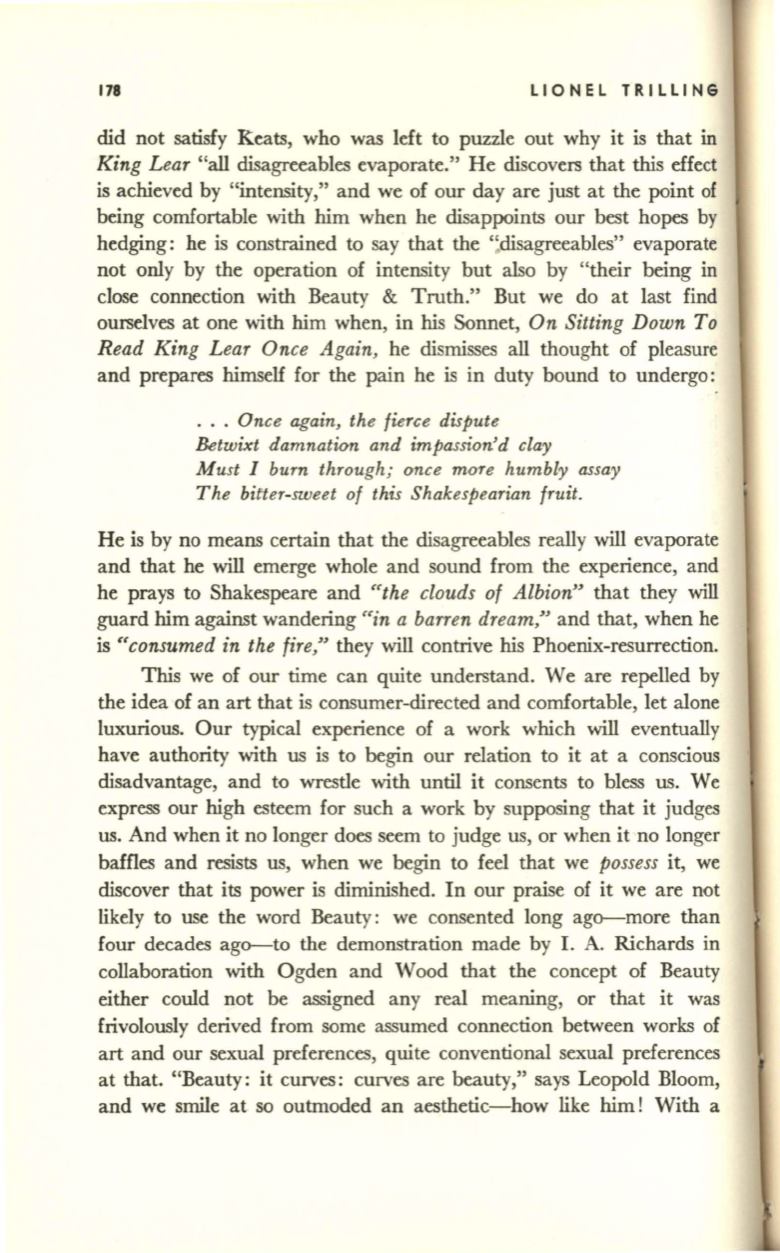
178
LIONEL TRILLING
did not satisfy Keats, who was left to puzzle out why it is that in
King Lear
"all disagreeables evaporate." He discovers that this effect
is achieved by "intensity," and we of our day are just at the point of
being comfortable with him when he disappoints our best hopes by
hedging: he is constrained to say that the ':disagreeables" evaporate
not only by the operation of intensity but also by "their being in
close connection with Beauty
&
Truth." But we do at last find
ourselves at one with him when, in his Sonnet,
On Sitting Down To
Read King Lear Once Again,
he dismisses all thought of pleasure
and prepares himself for the pain he is in duty bound to undergo:
...
Once again, the fierce dispute
Betwixt ,damnation and impassion'd clay
Must I burn through; once more humbly assay
The bitter-sweet of this Shakespearian fruit.
He is by no means certain that the disagreeables really will evaporate
and that he will emerge whole and sound from the experience, and
he prays to Shakespeare and
"the clouds of Albion"
that they will
guard him against wandering
"in
a barren dream,"
and that, when he
is
«consumed in the fire,"
they will contrive his Phoenix-resurrection.
This we of our time can quite understand. We are repelled by
the idea of an art that is consumer-directed and comfortable, let alone
luxurious. Our typical experience of a work which will eventually
have authority with us is to begin our relation to it at a conscious
disadvantage, and to wrestle with until
it
consents to bless us. We
express our high esteem for such a work by supposing that it judges
us. And when
it
no longer does seem to judge us, or when it no longer
baffles and resists us, when we begin to feel that we
possess
it, we
discover that its power is diminished. In our praise of it we are not
likely to use the word Beauty : we consented long ago--more than
four decades ago--to the demonstration made by
I.
A. Richards in
collaboration with Ogden and Wood that the concept of Beauty
either could not be assigned any real meaning, or that it was
frivolously derived from some assumed connection between works of
art and our sexual preferences, quite conventional sexual preferences
at that. "Beauty: it curves: curves are beauty," says Leopold Bloom,
and we smile at so outmoded an aesthetic- how like him! With a


